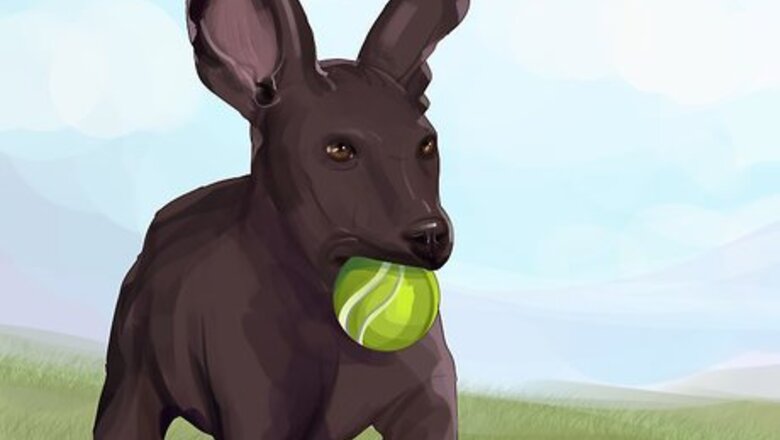
views
Beginning Your Training Program
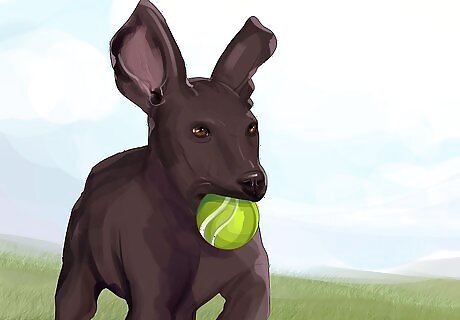
Start early. Although this may not always be an option, starting the dog training process when your dog is less than 1 year old is ideal, especially when it comes to large dogs. Plan to begin training your dog as soon as you bring it home, which may be as early as 8 weeks. If you’re training a puppy, keep the sessions short and integrate play into them to keep your puppy engaged. When training an older dog, expect the process to take a bit longer, and require a little more patience. It is not true that you "can't teach an old dog new tricks." It just requires a bit more effort!
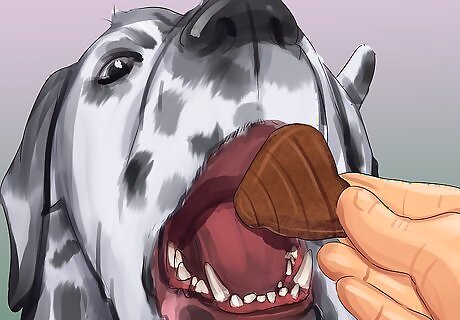
Use reward-based training methods. Dogs tend to respond better to reward-based training than they do to punishment. You may want to use edible treats to reward your dog when they perform the way you want them to. You can also use a favorite toy, verbal praise, and loving touch. Select an edible treat that your dog likes to eat. High-value treats like small pieces of hot dogs or chicken breasts work well. Say, "good dog!" or "good job!" Engage your dog in a short game of tug-of-war or fetch. Pet your dog on the head or scratch its ears.
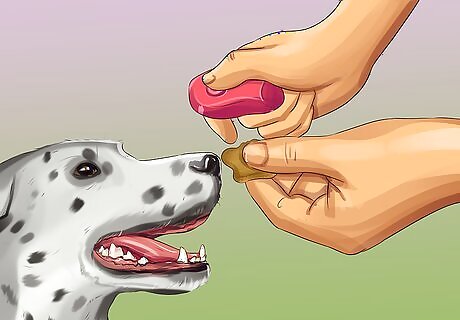
Consider using clicker training. The principle of clicker training is to teach the dog to associate the sound of the clicker with a reward or treat. Click the clicker anytime you reward the dog. The click becomes a way to immediately reward your dog for good behavior. A clicker can be purchased at your local pet store. Introduce the clicker to your dog, providing a treat each time you click. This is known as “charging the clicker.” Keep the clicker with you all the time, and click it anytime your dog exhibits good behavior then give the dog a reward or treat.
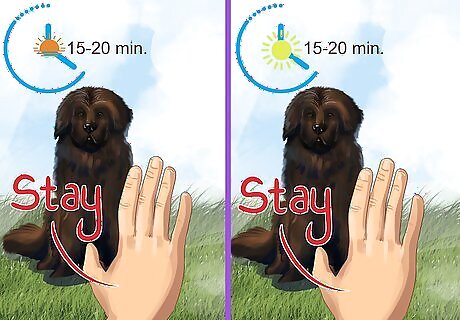
Set aside time for dog training. When you begin training your dog, plan to do 2 sessions per day, for around 15-20 minutes each. Many people have success doing 1 session in the morning, and 1 in the afternoon. Training sessions are a time for learning. You still need to reinforce the training throughout the day by rewarding good behavior with praise or treats. EXPERT TIP Sheri Williams Sheri Williams Certified Dog Trainer Sheri Williams is a Certified Dog Trainer and Behaviorist and the Owner of sheriwilliams.com, a business that specializes in teaching veterans how to turn their dogs into service dogs or emotional support animals to assist with PTSD. Based in the Los Angeles, California metro area, Sheri has over 20 years of dog training experience and also runs a general dog training practice specializing in rehabilitating dogs through positive reinforcement training techniques. She is certified by The Animal Behavior and Training Association. Sheri Williams Sheri Williams Certified Dog Trainer Become an expert through in-person training. To become skilled at dog training, it's helpful to do an in-person training program rather than learning online. Real-life experience working directly with the dogs and trainers is invaluable for picking up the nuances of dog behavior and training techniques.
Teaching Basic Commands
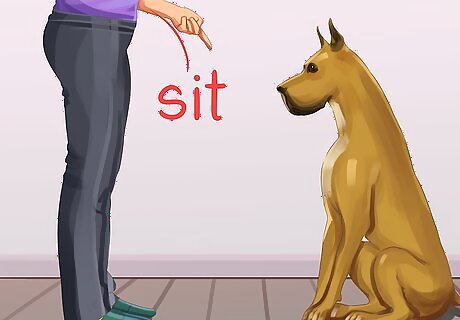
Teach your dog to "sit." Teaching a big dog to sit can be very useful. You can use this command anytime you need your dog to calm down. Start by showing your dog that you have a treat. Display the treat at nose level, then bring the treat up higher. Your dog's head should follow the treat, hopefully encouraging their bottom to go down. Say, “sit.” When its bottom hits the floor, praise your dog and provide the treat as its reward. Say the command "sit" with a loud, clear voice. The "treat" can be an edible treat and/or clicker noise (if you are clicker training). Once your dog starts to understand “sit,” skip the reward once in a while.
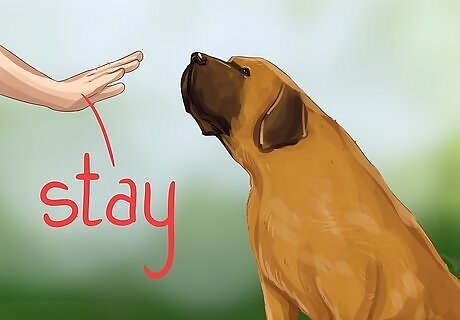
Train your dog to “stay.” “Stay” is really an extension of “sit,” so these commands should be taught in that order. Teaching a big dog to stay is important because it can prevent your dog from rushing too close to people. To teach stay, command your dog to sit, then take a step backward. Say the word "stay." If the dog does not move, provide a reward. Gradually increase the distance.
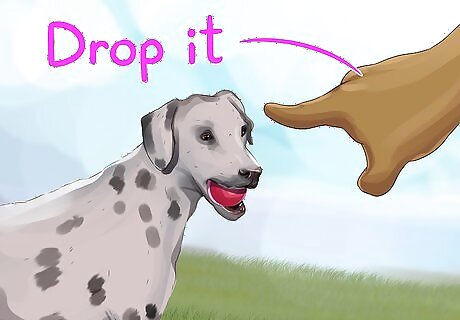
Teach your dog to “drop it.” Big dogs can get into more things than smaller ones. Your dog may even be able to reach items from your counter, so it is crucial to teach your dog to “drop it.” Begin by letting the dog pick something up, such as a toy. Offer your dog to “trade” you the item for a treat. When you see the dog’s jaw begin to relax, say the command, “drop it.” Praise the dog and offer the treat as soon as it drops the toy.
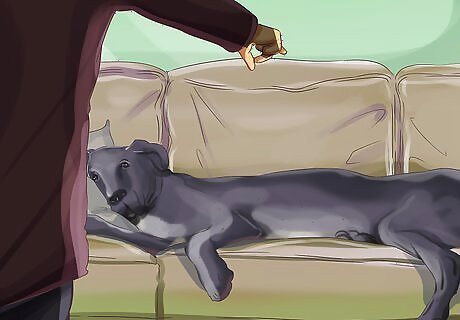
Teach your dog to stay off furniture. When training dogs, positive reinforcement works much better than punishment. Rather than scolding your dog when it gets on your furniture, simply tell the dog to "go to bed. Teach your dog to go to an approved spot (such as a dog bed) to get them away from the furniture. Direct your dog to the spot, and say “go to bed.” Provide a treat when this action is completed. "
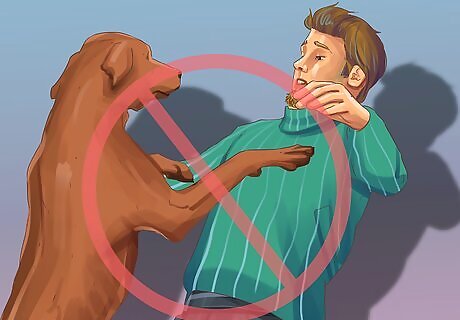
Prevent your dog from jumping on people. If your big dog is good at sitting and staying, you may be able to use these commands to prevent your dog from jumping on people. Again, you want to use as much positive reinforcement as possible, so reward your dog when they can successfully sit/stay, even though they are excited. You can use a command like “down” or “off” to interrupt jumping behavior. Always reward the dog when they comply. Teach your dog to sit and stay anytime a new person enters the room. This will discourage the dog from jumping on people as a greeting. If the dog does jump, use the "down" or "off" command, then give the dog a treat as soon as all 4 of its paws are on the floor.
Avoiding Common Mistakes
Don't rely on physical guidance as a training tool. Smaller dogs can be trained to sit by gently pushing down on their behinds, or taught to roll over by physically rolling them over. However, this might not work with a large dog. Instead, focus on verbal commands and positive reinforcement.
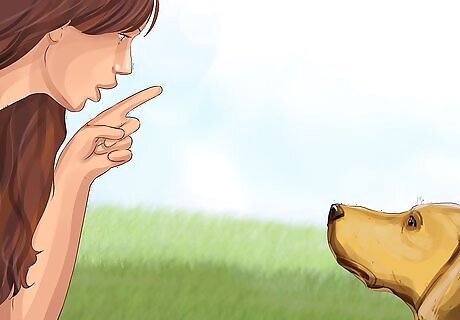
Give firm commands while making eye contact. You do not need to convince your dog that you are the alpha dog in the pack. In fact, an alpha dog will make a benevolent leader, not an aggressive enforcer. You simply need to show that your commands are firm, and that you won’t back down. Speak your commands in a loud, clear voice. Maintain constant eye contact with your dog as you do so.
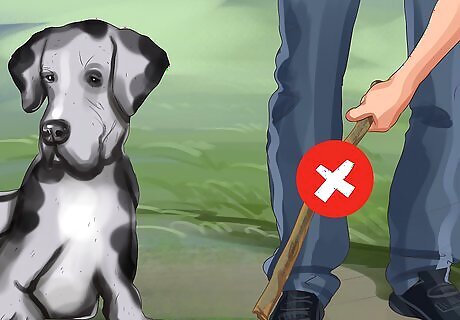
Use positive reinforcement over punishment. All dogs respond better to positive reinforcement rather than scolding or punishing, but it's especially important with big dogs, because you never want to give the dog a reason to be aggressive. Rather than trying to fight bad habits, focus on teaching good behaviors. Avoid hitting or yelling at your dog. If you find yourself becoming angry, simply walk away. Yelling at your dog or striking it may encourage the dog to become aggressive and act out.
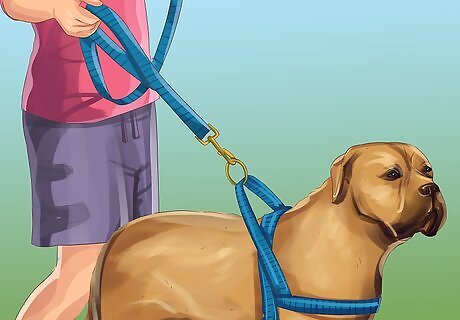
Consider keeping the dog on a leash during training. If you are worried that your dog may become aggressive or uncontrollable during a training session, a good option is to keep it leashed. A good yank on the leash when your dog is excited or misbehaving may be enough to calm to dog down. Pull the leash firmly towards you, but don't yank so hard that it will hurt the dog. For even more protection, you can use a head collar or muzzle. If your dog is aggressive, ask your veterinarian to recommend a professional dog trainer to help you curb this behavior.
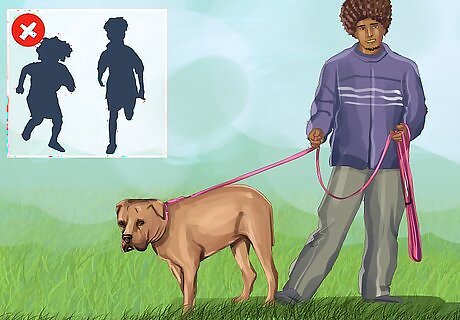
Keep children and other animals away while you are training. You want to train your dog in a calm and quiet environment. Try putting other pets in a different room, and asking children to stay away during training sessions. This allows your dog to focus, and it has the added benefit of keeping your pets and children safe. Once your dog has the basic commands down, you can work toward training with some distractions, like when other animals or children are present.
Be consistent with your training. If you're trying to teach your dog not to do something, you should enforce it every time you see the behavior. For instance, the dog will become confused if you let it sit on the couch to watch a movie with you, but then you scold it for sitting in the same spot when you have company.


















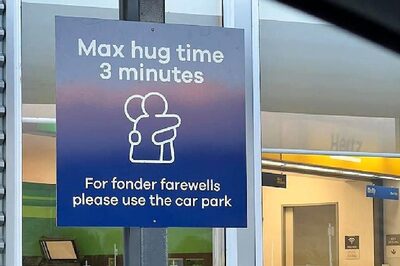

Comments
0 comment